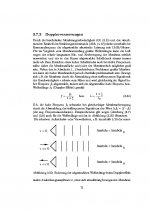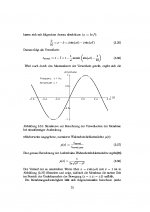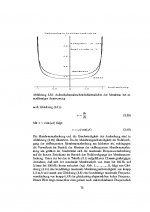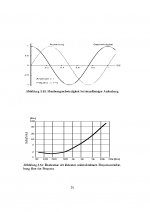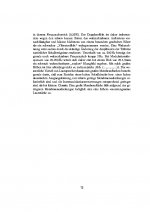(c)
Here is the part where I calculated the (fairly) audibility of IMD for a 3" speaker (FE83) at 1mm excursion. (P.S: It's for a book for beginners!)
The reference [86] is for: M.H.Knudsen, J.Grue Jensen,V.Julskjaer, P.Rubak: Determination of Loudspeaker Driver Parameters Using a System Identification Technique, J.Audio Eng. Soc., Vol37, No.9, September 1989.
Here is the part where I calculated the (fairly) audibility of IMD for a 3" speaker (FE83) at 1mm excursion. (P.S: It's for a book for beginners!)
The reference [86] is for: M.H.Knudsen, J.Grue Jensen,V.Julskjaer, P.Rubak: Determination of Loudspeaker Driver Parameters Using a System Identification Technique, J.Audio Eng. Soc., Vol37, No.9, September 1989.
Attachments
But the air doesn't generate any distortion. At least not until you get to jumbo jet engine levels >120dB SPL or so where the variations in air pressure start to approach the standing air pressure of 1 bar where a type of clipping will occur on the rareification half of the cycle.What we learned from this discussion, distortions generated by speakers are similar to distortions generated by an air itself.
Multiple sound sources such as an orchestra don't inter modulate with each other in the air, only through non linearities of the ear itself, which can be quite significant at high SPL.
Play the entire orchestra through one speaker though and there will be intermodulation in the signal arriving at the ear, before the ear adds its own distortions...then you will have distortion products of distortion products...
Here is the part where I calculated the (fairly) audibility of IMD for a 3" speaker (FE83) at 1mm excursion. (P.S: It's for a book for beginners!)
The reference [86] is for: M.H.Knudsen, J.Grue Jensen,V.Julskjaer, P.Rubak: Determination of Loudspeaker Driver Parameters Using a System Identification Technique, J.Audio Eng. Soc., Vol37, No.9, September 1989.
Nice pictures, thank you; but Google Translator can't work yet with images.
so much sense written here. And so few prepared to agree. There is no ideal transducer. Certainly fr are better than multiway. Electrostatics and arrays better still, but compromised in other forms of distortion. U dont need to understand all of the math inside out, to understand the mechanisms which generate these distortions. In fact most of the theory has some major assumptions and simplifications which hide much from the story, so that in the end a very simple approximation is all we have.
Are you sure its that high ?*184dB, IIRC.
Nice pictures, thank you; but Google Translator can't work yet with images.
I probably made a basically error by calculating intermodulation
(...10 years ago), and will think about it....
Btw. You could try to measure with your microphone array,
if the wavefront of your speaker array is cylindrical.

Last edited:
Btw. You could try to measure with your microphone array,
if the wavefront of your speaker array is cylindrical.
Yesterday Tap Plastic called me and said that panels were ready. When I come I found that they did as pictured, 4 holes on bottom and 1 on top, despite there was a dotted line and written "16 of 1 1/8" holes to drill". Thanks goodness they did not drill a dotted line there.
By the way, I once made an array of 5 capsules. When you listen to records you can hear movements of sounds around the head.
http://wavebourn.com/forum/download.php?id=133&f=7


Yesterday Tap Plastic called me and said that panels were ready. When I come I found that they did as pictured, 4 holes on bottom and 1 on top, despite there was a dotted line and written "16 of 1 1/8" holes to drill". Thanks goodness they did not drill a dotted line there.
You'd maybe forgot to write them: 'Please call back for any problems, doubts and questions.'
By the way, I once made an array of 5 capsules. When you listen to records you can hear movements of sounds around the head.
You could try to measure interference patterns at high frequencies too.
When you listen to records you can hear movements of sounds around the head.
I hear this effect seldom with my non-array speakers.
You already started building your mic-array tupeamp
and still make your own PCBs (?)
You use audio transformers. The are sensitive to magnetic fields.
I use a circuit to record telephone calls (via inductive sensor coil)
for detecting magnetic fields by hearing them with headphones.
Btw., seems, I used the audible frequency difference
for just the single (the same) frequency. Stupid!

I haven't read the whole thread but does anyone else wonder about this?.... When everything else is equal:
Recorded frequency range and quality
Replay equipment etc..
very good quality, well set up equipment should be able to sound lovely and tireless, with good two way speakers. One can achieve the best of both worlds, "quantity and quality".
If you replace the 2-way speakers with even very high quality and eexpensive, (limited range), full range speakers, what happens to the "redundant" sound frequencies?
Recorded frequency range and quality
Replay equipment etc..
very good quality, well set up equipment should be able to sound lovely and tireless, with good two way speakers. One can achieve the best of both worlds, "quantity and quality".
If you replace the 2-way speakers with even very high quality and eexpensive, (limited range), full range speakers, what happens to the "redundant" sound frequencies?
210, my microphone array was inside of MXL 770 body, 5 Panasonic capsules around Plasticine ball, arranged like a star (the 5'th one at the rear side). What you saw on the picture, is a breadboard with 5 preamps, matrix, compressor - limiter with bright LED level indicator, output transformers, and power supply. Yes, power transformer is in the same case with output transformers.
210, my microphone array was inside of MXL 770 body, 5 Panasonic capsules around Plasticine ball, arranged like a star (the 5'th one at the rear side). What you saw on the picture, is a breadboard with 5 preamps, matrix, compressor - limiter with bright LED level indicator, output transformers, and power supply.
Ah, obvious.
Thought, you use a direct coupled output poweramp
and the OTs were Cinemag input transformers or some psu chokes.
Btw., I wasn't satisfied using chokes in tube psu's, and still avoid using inductors/coils (for LC filtering)
because of their magnetic coupling sensitivity. I was pretty surprised to measure (=hear via headphone)
how far the magnetic ac field of transformers, even torodial, reaches inside and outside of the device case etc.
I read that we are not frequency based listeners really, we are time based, and frequency is a derivative of time.
From my remaining psychoacoustic knowledge (Mr. Klippel 'defined it all' bookwise)
is the human hearing (including neuronal) primary time sensitive in the frequency range where, say, humans speaking changes fast (etc.).
and frequency is a derivative of time.
Frequency means periodicity (in time).
I'd lean the transients at 'frequently', maybe.
Wow! Whoda thunk my question would generate such a response.
Gonna have a job soon and my GF said i can make ANY speakers i want once that happens. She might regret that, BBBIB here i come!
But seriously, i think ill put sawdust to the question i asked and build a bookshelf 5 1/4" fullranger to test my theory.
thinking of something with a $30 to $50 driver in 1/2" material.
Any ideas?
Gonna have a job soon and my GF said i can make ANY speakers i want once that happens. She might regret that, BBBIB here i come!
But seriously, i think ill put sawdust to the question i asked and build a bookshelf 5 1/4" fullranger to test my theory.
thinking of something with a $30 to $50 driver in 1/2" material.
Any ideas?
That may work but i wanted the two enclosures to be as similar as possible to see in the phase differences, due to crossover insertion and 2 drivers interacting, would be most obvious.
An array is such a radically different system that it would take me a long time to determine its actual sound before i compared it to the sound of the smaller speaker.
Perhaps once i am into it i can build some huge array. but then i will wonder how big an array needs to be in order for its effect will swamp the individual elements. another day perhaps and another thread.
An array is such a radically different system that it would take me a long time to determine its actual sound before i compared it to the sound of the smaller speaker.
Perhaps once i am into it i can build some huge array. but then i will wonder how big an array needs to be in order for its effect will swamp the individual elements. another day perhaps and another thread.
I use currently 8 midrangers and 16 tweeters per side currently, quite arrayish sound. However, something like from floor to ceiling of 1"or smaller fullrangers to cover from 20 Hz to 20 KHz would be much better. 
I have a stick of 64 x 12 mm speakers for the center channel, though, as tweeter for a pair of 6.5" fullrangers.
I have a stick of 64 x 12 mm speakers for the center channel, though, as tweeter for a pair of 6.5" fullrangers.
- Status
- This old topic is closed. If you want to reopen this topic, contact a moderator using the "Report Post" button.
- Home
- Loudspeakers
- Full Range
- sound quality vs sound quantity.
